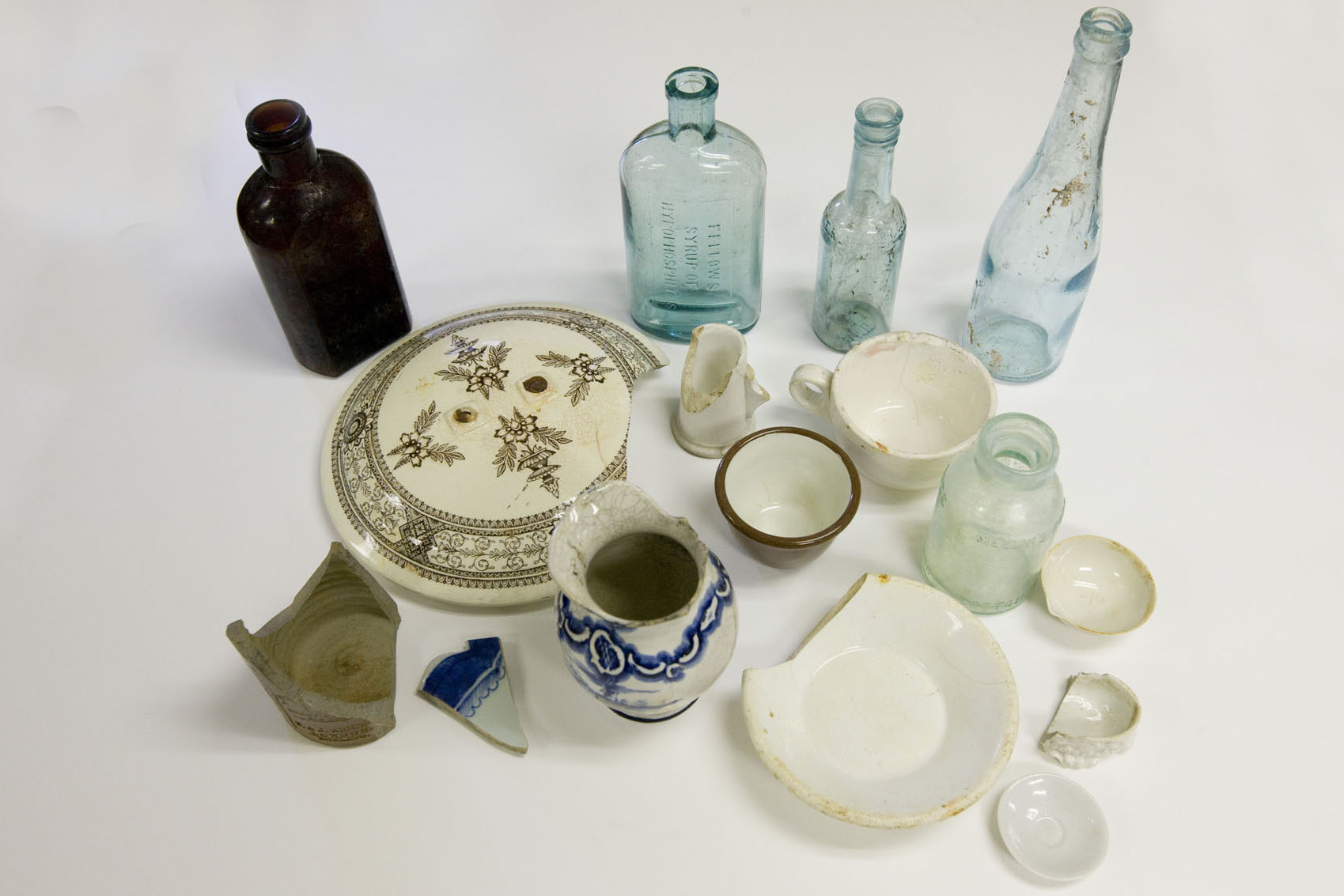January 9, 2009 — Excavation for the South Lawn terrace has raised some small, broken pieces of the University of Virginia's past.
The north end of the terrace, which links the South Lawn to the rest of Grounds across Jefferson Park Avenue, is being built on the site of an old University dump. Archaeologist Ben Ford has been monitoring the excavation and pulled out some of the pieces in late last summer.
"There were pieces of china with the University symbol on them and old bottles," Ford said. "It was dining hall stuff and some things from the old hospital."
He said they also found academic items such as discarded test tubes and pieces of other scientific equipment.
"The investigation of the refuse site can give us insight into the mundane details of daily life that were so ordinary, people did not write about them," said Mary Hughes, landscape architect for the University. "This is another way to find out information about the past."
Ford said that, before the construction of Old and New Cabell halls, the steep south end of the Lawn was used as a dump for many years. There is little evidence about when the dumping started, but the Board of Visitors ordered the site closed in June 1922 after nearby residents complained about the odors from and the burning of the dump.
"This Committee is of the opinion that the dump heap … is not only injurious to the University property, but highly injurious to the homes of the petitioners," board members stated in their resolution to close the dump. The board instructed a new dump be established at "the abandoned rock quarry west of the Cemetery."
Ford said the dump was used for organic and inorganic trash from the University buildings and student and professors' residences. He said there would also have been local contractors who removed trash to other sites and cleaned out privies.
Ford monitored the excavation to see what was dredged up, but he said the dump was a known site and was not considered worth the effort of conducting a specific independent study of it.
"The cultural material was not significant," Ford said. "These are articles of the material culture that were used and discarded," he said.
The artifacts belong to the state, Ford said, and eventually will be archived in boxes at the University.
The north end of the terrace, which links the South Lawn to the rest of Grounds across Jefferson Park Avenue, is being built on the site of an old University dump. Archaeologist Ben Ford has been monitoring the excavation and pulled out some of the pieces in late last summer.
"There were pieces of china with the University symbol on them and old bottles," Ford said. "It was dining hall stuff and some things from the old hospital."
He said they also found academic items such as discarded test tubes and pieces of other scientific equipment.
"The investigation of the refuse site can give us insight into the mundane details of daily life that were so ordinary, people did not write about them," said Mary Hughes, landscape architect for the University. "This is another way to find out information about the past."
Ford said that, before the construction of Old and New Cabell halls, the steep south end of the Lawn was used as a dump for many years. There is little evidence about when the dumping started, but the Board of Visitors ordered the site closed in June 1922 after nearby residents complained about the odors from and the burning of the dump.
"This Committee is of the opinion that the dump heap … is not only injurious to the University property, but highly injurious to the homes of the petitioners," board members stated in their resolution to close the dump. The board instructed a new dump be established at "the abandoned rock quarry west of the Cemetery."
Ford said the dump was used for organic and inorganic trash from the University buildings and student and professors' residences. He said there would also have been local contractors who removed trash to other sites and cleaned out privies.
Ford monitored the excavation to see what was dredged up, but he said the dump was a known site and was not considered worth the effort of conducting a specific independent study of it.
"The cultural material was not significant," Ford said. "These are articles of the material culture that were used and discarded," he said.
The artifacts belong to the state, Ford said, and eventually will be archived in boxes at the University.
— By Matt Kelly
Media Contact
Article Information
January 9, 2009
/content/terrace-excavation-yields-old-dump-artifacts

